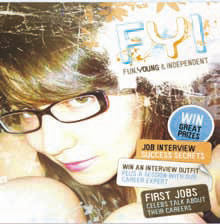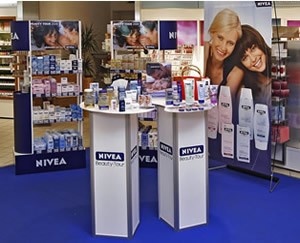Promotion is how the business tells customers that products are
available and
persuades them
to buy.
Promotion is either above-the-line or below-the-line.
Above-the-line promotion
is directly paid for, for example TV or newspaper advertising.
Below-the-line is where the business uses other promotional methods to get the product message across.
•
Events or
trade fairs help to launch a product to a wide audience. Events may be business
to consumer
(B2C)
whereas trade fairs are business to business (
B2B).
•
Direct mail can reach a large number of people but is not easy to target specific
consumers cost-effectively.
•
Public relations (PR) includes the different ways a business can communicate with its
stakeholders, through, for example, newspaper press
releases. Other PR activities
include sponsorship of high profile events like Formula 1 or the World Cup, as well as
donations to or
participation in
charity events.
•
Branding – a strong and consistent brand identity
differentiates the product and helps
consumers to understand and trust the product. This aims to keep consumers buying the
product
long-term.
•
Sales promotions, for example
competitions or
sampling, encourage consumers to buy
products in the
short-term.
Promotional activities include:
NIVEA chooses promotional strategies that reflect the lifestyle of its audience and the range of
media available. It realises that a ‘one way’ message, using TV or the press, is not as
effective as talking directly to its target group of consumers. Therefore NIVEA does not plan to
use any above-the-line promotion for NIVEA VISAGE Young.
The promotion of NIVEA VISAGE Young is
consumer-led. Using various below-the-line routes,
NIVEA identifies ways of talking to teenagers (and their mums) directly.
• A key part of the strategy is the use of product
samples. These allow customers to touch,
feel, smell and try the products. Over
a million samples of NIVEA VISAGE Young products
will be given away during 2008. These samples will be available through the website,
samples in stores or in ‘
goody bags’ given out at VISAGE roadshows up and down the
country.
• NIVEA VISAGE Young launched an
interactive online magazine called FYI (Fun, Young &
Independent) to
raise awareness of the brand. The concept behind the magazine is to give
teenage girls the
confidence to become young women and to enjoy their new-found
independence. Communication channels are original and
engaging to enable teenagers
to identify with NIVEA VISAGE Young. The magazine focuses on ‘first time’ experiences
relating to NIVEA VISAGE Young being their first skincare routine. It is promoted using the
Hit40UK chart show and the TMF digital TV channel.
• In connection with FYI, NIVEA VISAGE Young has recognised the power of
social network
sites for this young audience and also has pages on MySpace, Facebook and Bebo. The
company is using the power of new media as part of the mix to grow awareness
amongst the target audience.

Conclusion
NIVEA VISAGE Young is a skincare range in the UK market
designed to
enhance the skin and
beauty of the teenage consumer rather than being medicated to
treat skin problems. As such, it
has created a clear position in the market. This shows that NIVEA understands its consumers and
has produced this
differentiated product range in order to meet their needs.
To bring the range to market, the business has put together a marketing mix. This mix
balances the four elements of product, price, place and promotion. The mix uses traditional
methods of place, such as distribution through the high street, alongside more modern
methods of promotion, such as through social networking sites. It makes sure that the
message of NIVEA VISAGE Young reaches the right people in the right way.



